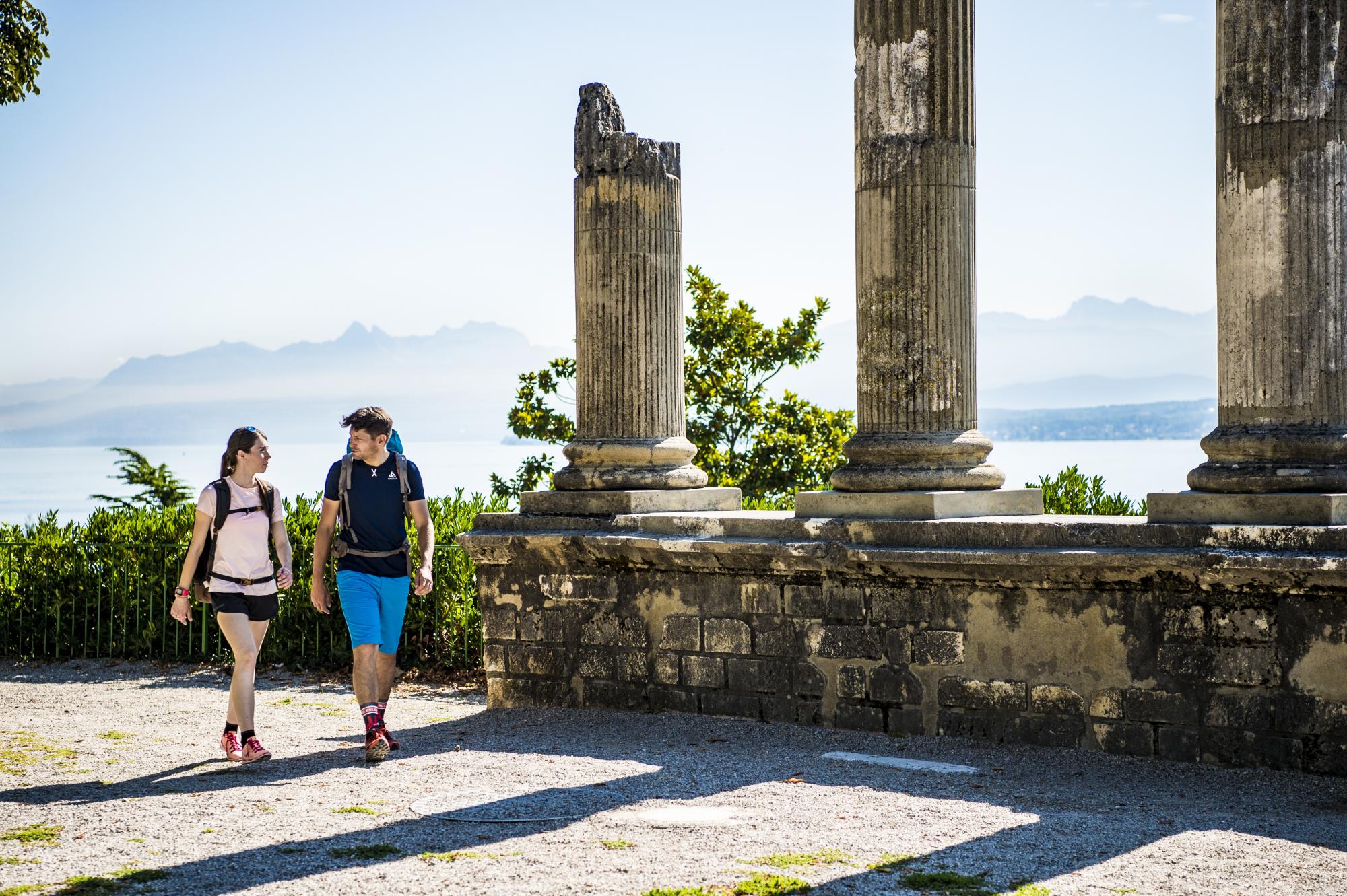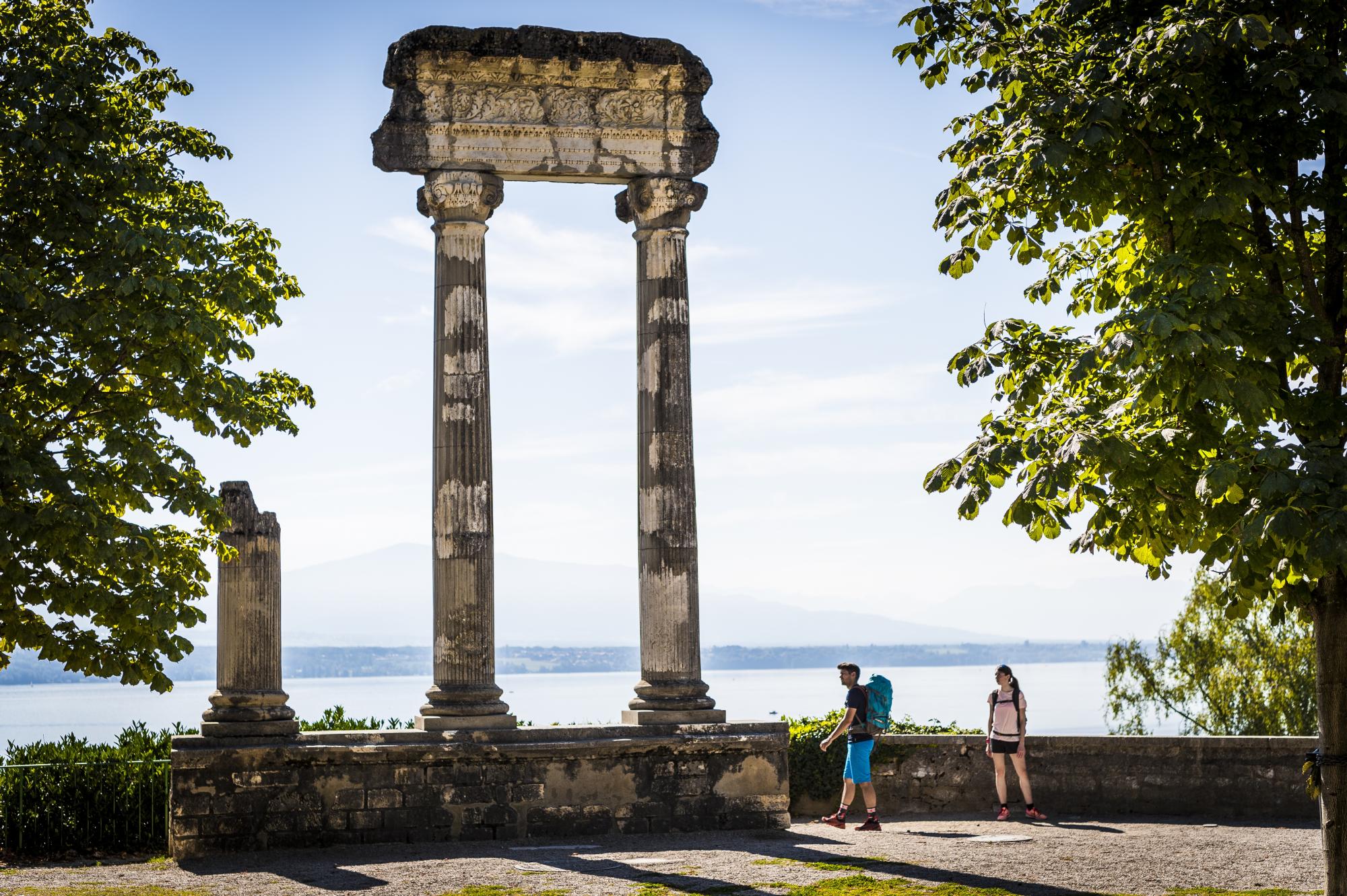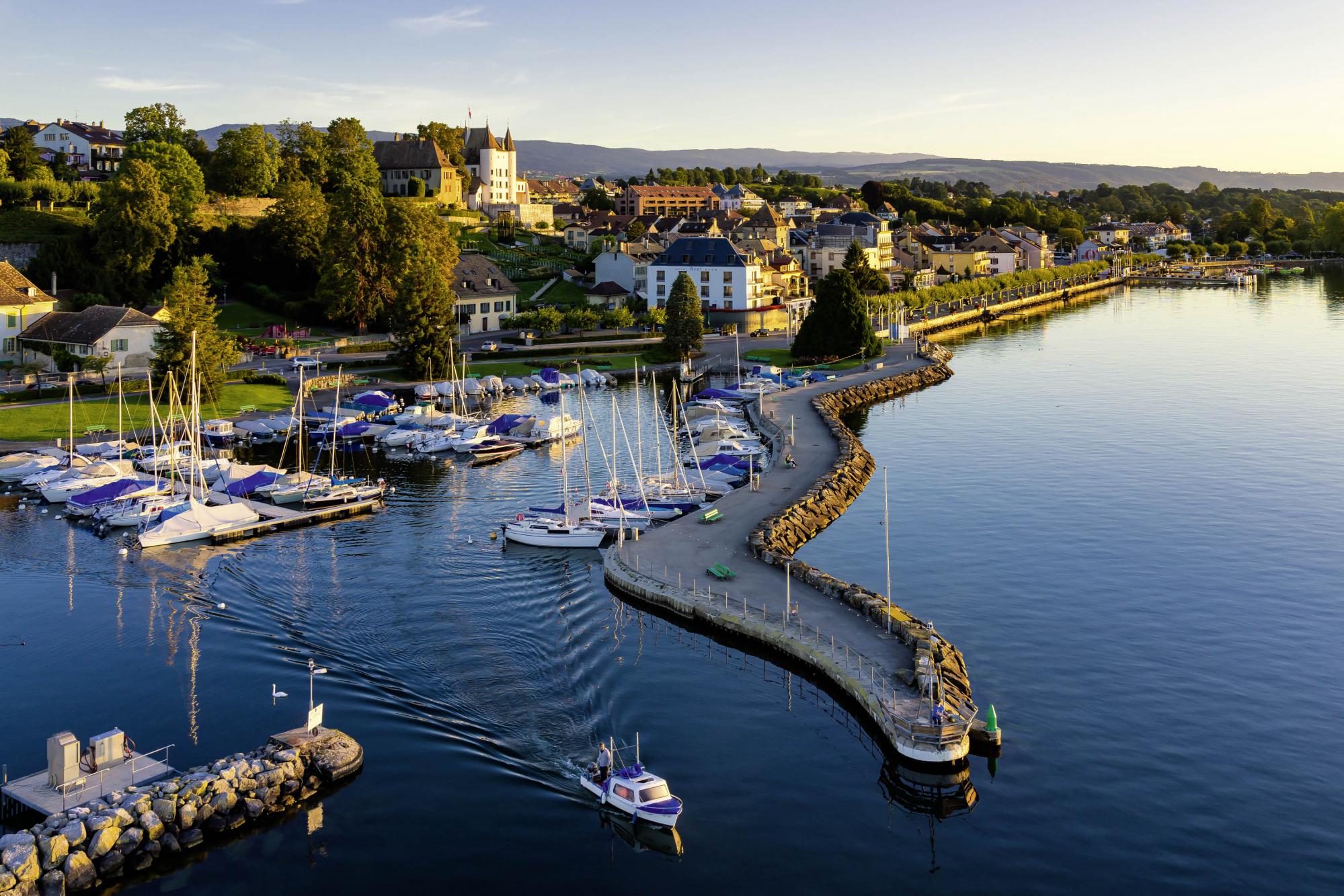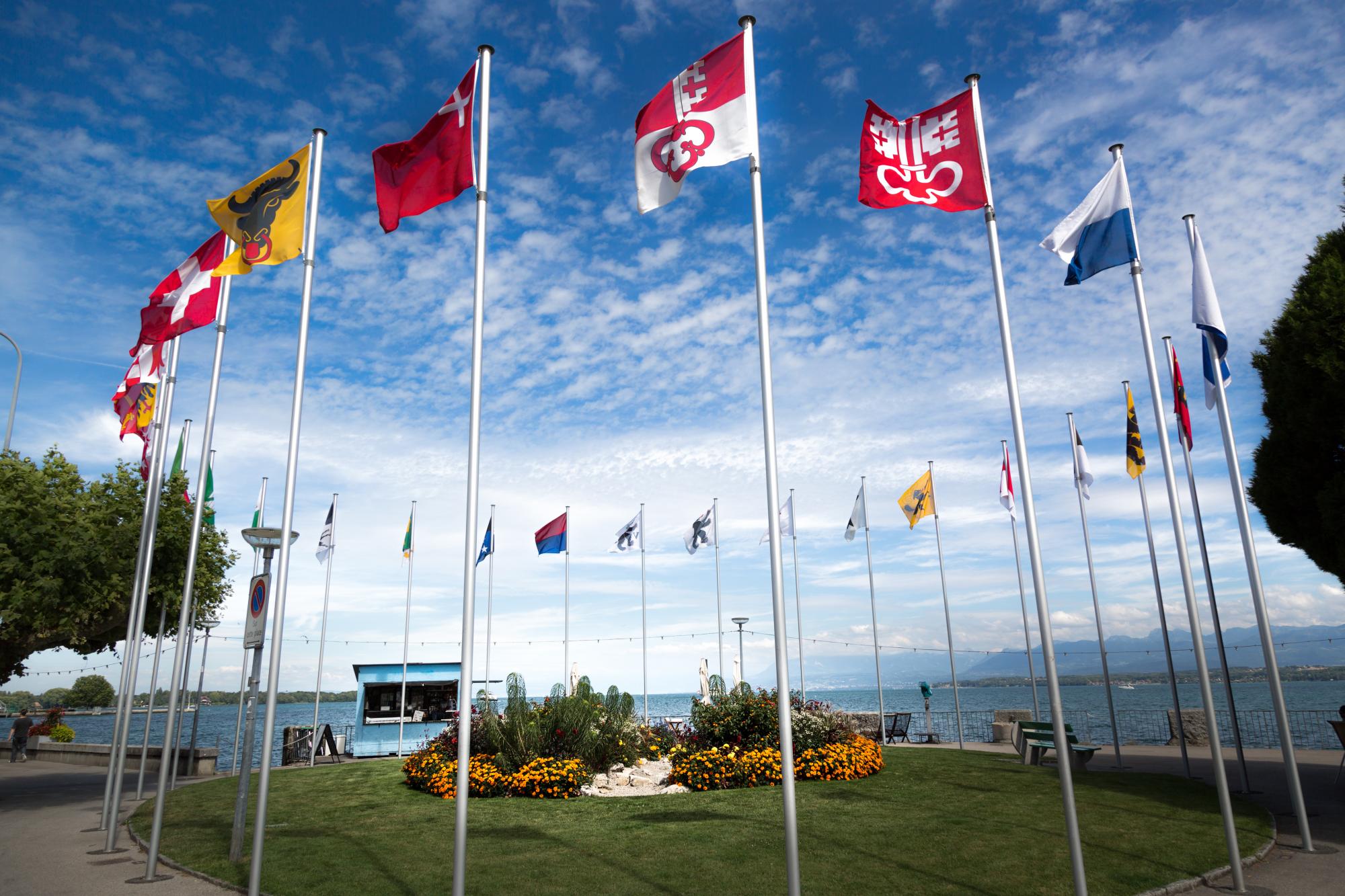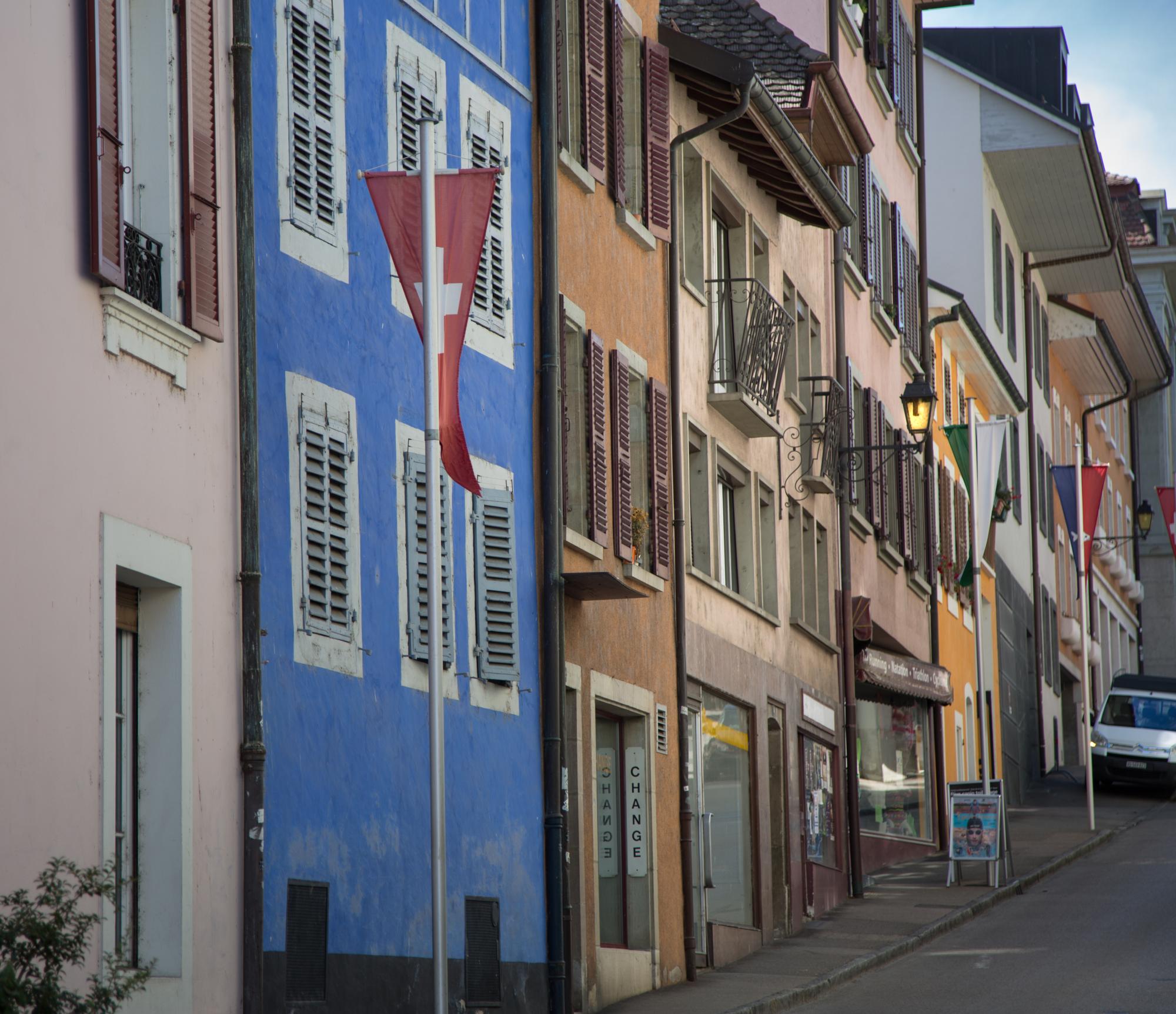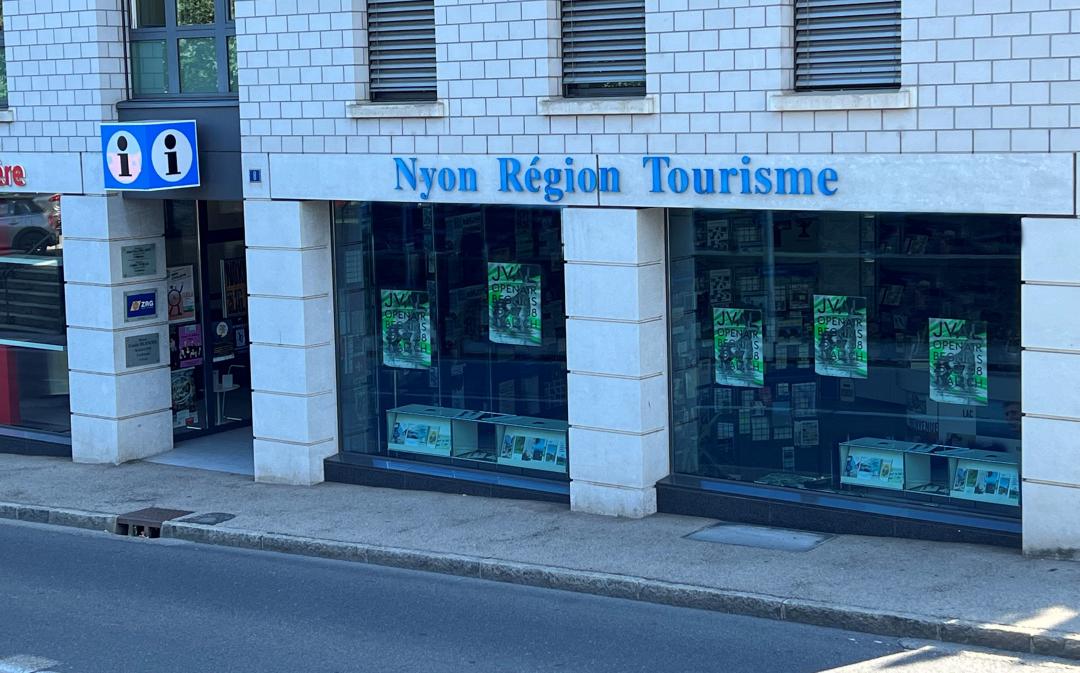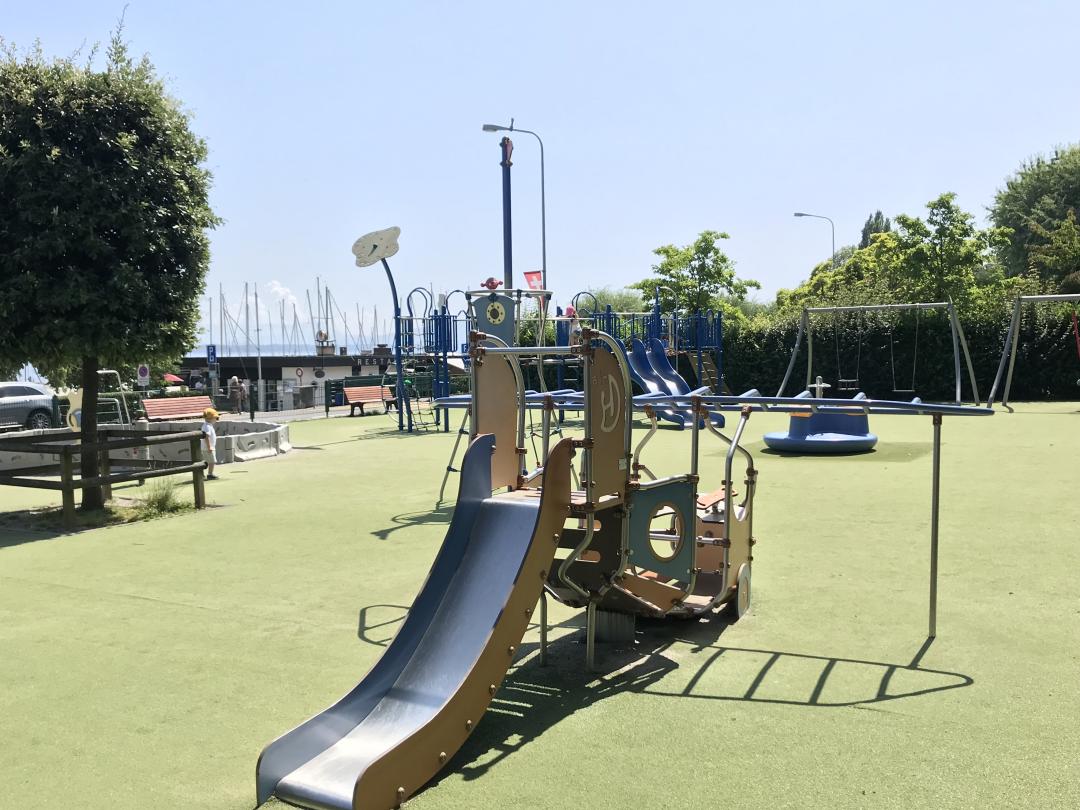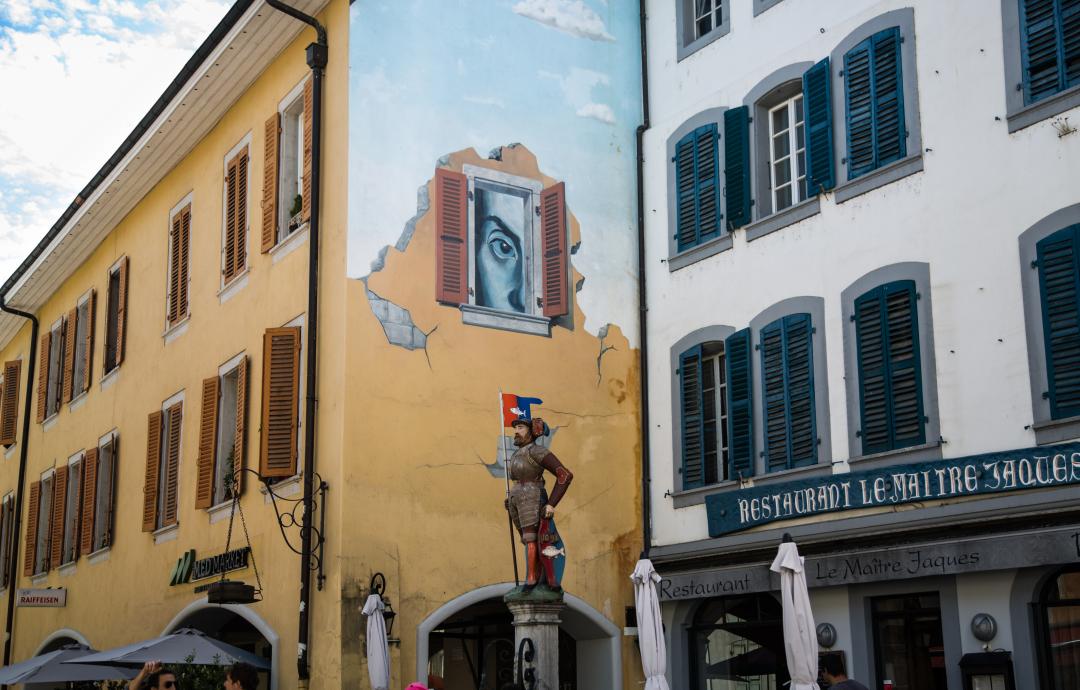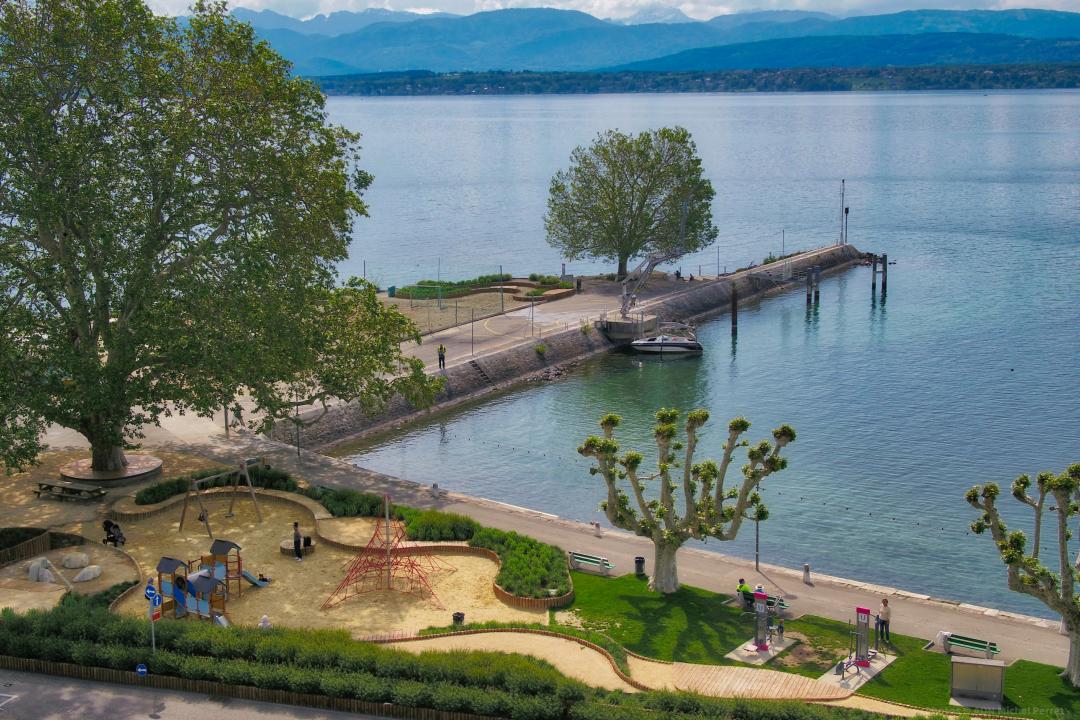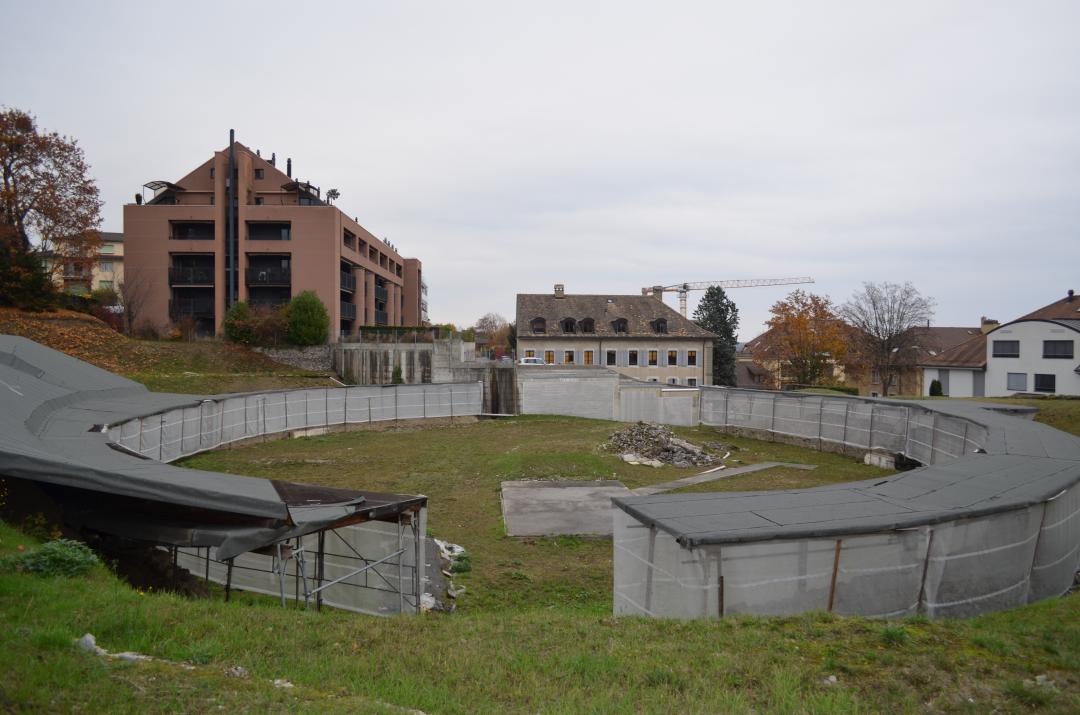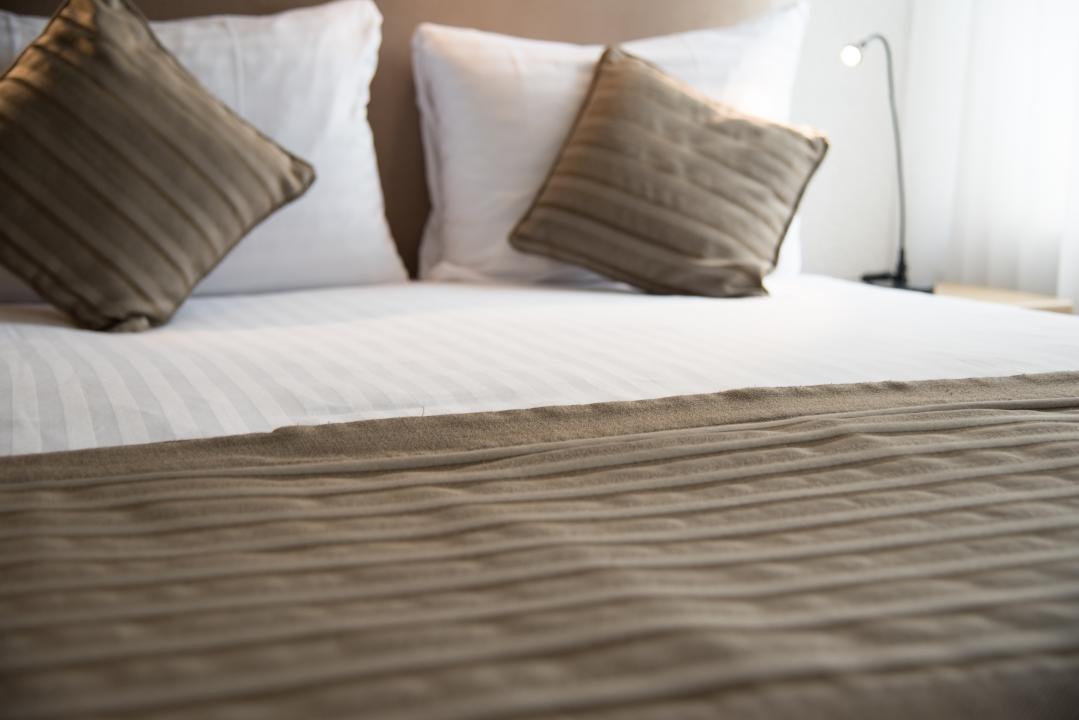Discover Nyon and its history with anecdotes and its monuments! You are welcome to come to the Tourist Office to get the map.
In about an hour of an easy walk, Nyon reveals its secrets while letting you the pleasure to discover its streets, its craftsmen, its various monuments and so many more.
Archaeologic insights witness human presence on the lakeshores since the Neolithic period. In the Iron Age, the Helvetians, a Celtic nation, occupied the Swiss midlands probably as far as the region of Nyon. After his victories in Gaul, Julius Caesar decided to establish the Colonia lulia Equestris about 45 years BC. Nyon (whose name originates from its Celtic antecedent “Noviodunum”) was the urban center of this area. The vestiges of its imposing monuments lie beneath the current city.
During medieval time, Nyon was granted to the Archbishop of Besançon and later ruled by the Lord of Prangins until 1293 when the Savoy family conquered Vaud. The installation of a mintage site led to an important economic recovery. In 1536, Nyon was raised to the status of “administrative center of a Vogtei of Bern”. Headquarter of the Vogt until the Vaud revolution of 1798, the city became part of the Helvetic canton established in 1803. From 1781 until 1813, a porcelain factory contributed to Nyon's reputation for fine ceramics. Since 1798, Nyon is the capital of the same named district.
